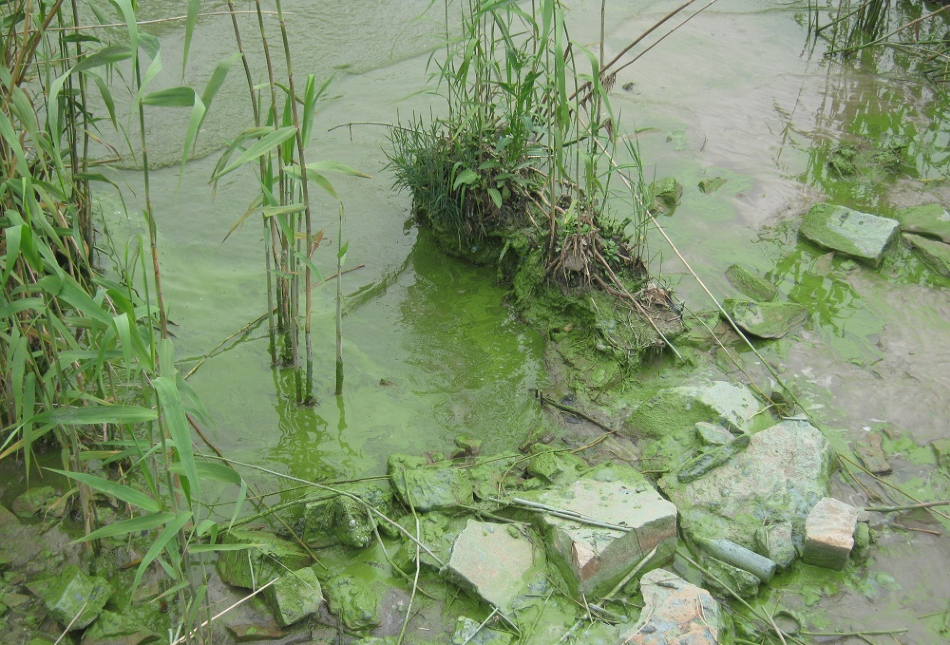May 15 2020
Purification of wastewater has reduced the quantity of phosphorus and nitrogen in surface water. However, toxic algal blooms still grow regularly.
 Taihu in China, where millions were deprived of drinking water due to algae growth. Image Credit: Annette Janssen, China, 2016.
Taihu in China, where millions were deprived of drinking water due to algae growth. Image Credit: Annette Janssen, China, 2016.
Since the purification plants are better at eliminating phosphorus compared to nitrogen, the equilibrium between these two elements is changing on a worldwide level.
This leads to a relatively high level of nitrogen in the purified water, which in turn results in plentiful algal growth with priority for nitrogen. This is the conclusion of an international team of researchers, including Wageningen University & Research, in a paper published in the PNAS journal.
Similar to humans, nature also requires a balanced diet: not too much, and the optimal balance in nutrients. While a diet with adequate fresh vegetables and fruits, and a moderate quantity of fat, is what humans need, nature requires a balance between phosphorus and nitrogen.
Purification plants have been built to avoid too much of nutrients being deposited in nature. Among the world-leading countries investing in wastewater purification, the Netherlands is also a forerunner. However, even in the Netherlands, phosphorus was removed better compared to nitrogen for several years.
This may cause an imbalance in the natural ratio between nitrogen and phosphorus. Even if the total level of nitrogen and phosphorus is lowered, this imbalance facilitates the growth of toxic blue-green algae.
Annette Janssen, Researcher, Wageningen Water Systems and Global Change group, Wageningen University & Research
Balance Shifting Towards Nitrogen
“We see a global shift in the balance between phosphorus and nitrogen in favor of nitrogen,” states Janssen. In China, the ratio of nitrogen–phosphorus increased from 20 to around 31 between 2008 and 2017, thus exceeding the European levels.
This implies that, while water is getting cleaner, it contains more nitrogen than phosphorus. Every organism has its own choice of nutrients. There exists a huge difference in the choice for phosphorus or nitrogen even between different algae.
Fairly nontoxic algae flourish with comparatively less nitrogen and more phosphorus. On the other hand, toxic blue-green algae thrive on higher levels of nitrogen. Thus, the worldwide increase in the nitrogen to phosphorus proportion may hamper further enhancement in water quality, the scientists note.
Harmful Blue-Green Algae
As an example, the scientists took the water quality in China, which is highly impacted by blue-green algae. In the Netherlands, the blue-green algae often affect the quality of swimming waters; by contrast, in China, it affects the drinking water supply.
There has already been an incident where a plague of blue-green algae blocked the water supply of millions of people.
Annette Janssen, Researcher, Wageningen Water Systems and Global Change group, Wageningen University & Research
Ratio Nitrogen–Phosphorus for Algae Growth
In the PNAS paper, the scientists reveal that variations in the efficiency with which nitrogen and phosphorus are eliminated from wastewater have led to an increase in the nitrogen–phosphorus ratio in Chinese lakes. This could show why blue-green algae persist, in spite of the measures taken to stop them.
In addition to reducing the levels of nitrogen and phosphorus, their ratio is also a critical factor in the growth of toxic algae.
Annette Janssen, Researcher, Wageningen Water Systems and Global Change group, Wageningen University & Research
In summary, the scientists note that the focus on water quality enhancement should not just be to decrease nutrients, but also to maintain the phosphorus–nitrogen ratio.
Journal Reference:
Tong, Y., et al. (2020) Improvement in municipal wastewater treatment alters lake nitrogen to phosphorus ratios in populated regions. Proceedings of the National Academy of Sciences of the United States of America. doi.org/10.1073/pnas.1920759117.